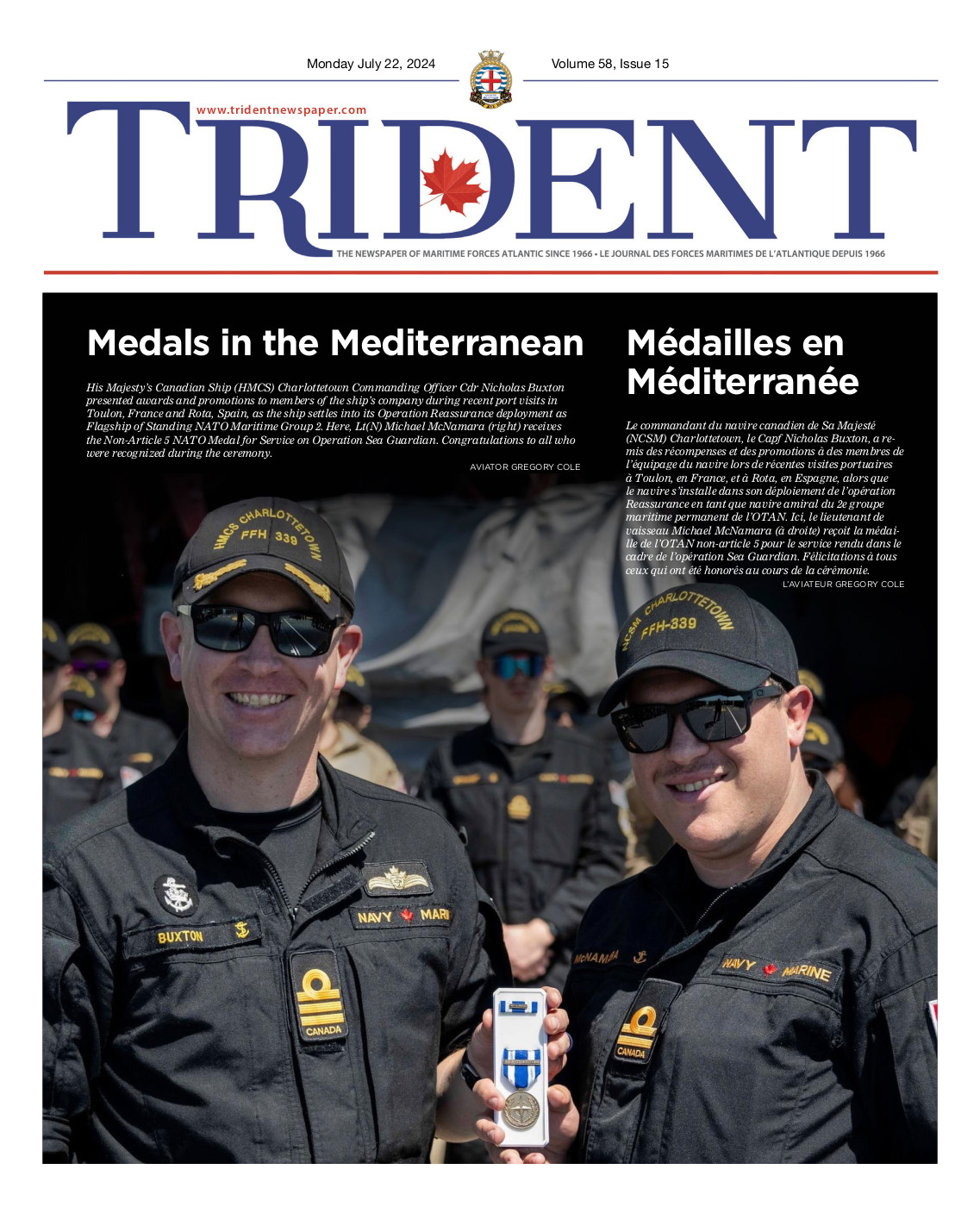
Photo: SHEARWATER AVIATION MUSEUM
Retired RCAF Colonel explores 100 years of maritime aviation in Shearwater
By Ryan Melanson,
Trident Staff
The air station now known as 12 Wing Shearwater has existed under many different names, and has been under the control of many different organizations, since the first operational patrols took off from the site in 1918.
From its early years playing host to US Navy airmen during the First World War as United States Naval Air Station Halifax, to its short-lived stint as Canadian Air Board Station Dartmouth, then RCAF Station Dartmouth, Royal Canadian Naval Air Station Dartmouth, CFB Shearwater, and now 12 Wing Shearwater, the long list of different authorities to which the base answered to is reflective of the colourful history of military aviation in Canada and in this region.

This was part of the focus for Col (Ret’d) John Orr in his recent presentation on the history of Shearwater at a meeting of the Royal United Services Institute of Nova Scotia (RUSI(NS)) on June 20 . Col Orr, a former CO of 423 Squadron and former Maritime Air
Component Commander, titled his talk “Seven Flags over Shearwater: 100 years of an East Coast Air Station.”
“Since its inception, Shearwater has served under a variety of organizations, hence the seven flags over Shearwater. It’s location at the entrance to Halifax, Atlantic Canada’s major port, and the great circle route between North America and Europe, means that it has been, and will continue to be, involved with ships and those that go to sea,” Col Orr said.
“In its various incarnations, Shearwater is in many ways a unique military institution, and its history illustrates the many twists and turns in the development of Canadian military aviation.”
Rather than an exhaustive chronological history of operations or a description of every aircraft ever flown from the air station, Col Orr explored some of the influential leaders who have left their mark on Shearwater under its different organizational umbrellas. The list includes one former Chief of the Defence Staff, Adm Robert Falls, the last CDS who was also a Second World War veteran, as well as former Air Force commanders LGen Larry Ashley and LGen Angus Watt. Col Orr, however, chose to focus on lesser-known figures.
The first were US Navy LCdr Richard Byrd and LCol John Cull of the RAF, who both played instrumental roles in the birth of Shearwater as an air base during the First World War.
“Because the Royal Canadian Naval Air Service had neither the equipment nor the personnel to carry out operational patrols in 1918, the US Navy agreed to fill the gap in Nova Scotia with their own equipment and personnel while the RCNAS was being trained,” Col Orr said.
LCdr Byrd arrived in August of 1918, with his men conducting the first flights out of Shearwater just weeks later in Curtiss HS2L Flying Boats, while LCol Cull was tasked with establishing a framework for the new RCNAS, which was to conduct flights from Halifax, Cape Race, Cape Sable, and Sydney.
“He and a small team attempted to direct this service from scratch, as well as engaging in the quasi diplomatic challenges of inserting a foreign military service inside a Canadian structure. That so much was accomplished in a short time was truly remarkable. It was aided by the fact that Cull and Byrd hit it off immediately and established a decades-long friendship.”

Photo: SHEARWATER AVIATION MUSEUM
Nearly 20 years later, just prior to the outbreak of the Second World War, Shearwater entered an era that would see major expansions as the government planned for the RCAF to play a primary role in conflict to avoid the high casualty numbers of the First World War. A man at the centre of this period was Air Marshall (Ret’d) Gus Edwards, who entered as commander of RCAF Station Dartmouth in 1934 and remained until 1938.
While overseeing significant expansions through an unemployment relief program, including new hangars and the station’s first runways, Edwards also built up Shearwater’s No.5 Flying Boat squadron to be a respectable force. The squadron and Edwards were lauded for supporting a rescue mission following the 1936 Moose River Mine Disaster, with squadron aircraft helping to shuttle equipment and people to the mine site, and to bring some of the rescued miners to hospital.
“When he turned over command in 1938, Edwards had led the station through a remarkable transformation, from an operational backwater to being the only combat-ready unit of the RCAF in Canada prior to the outbreak of the Second World War,” Col Orr noted.
While those individuals and others highlighted in the presentation led Shearwater through exciting milestones or major expansions, there have also been instances of difficult or uncertain times at the air station. The future of Shearwater was considered to be up in the air following the Armistice in 1918 and subsequent disbanding of the Royal Canadian Naval Air Service, and again following the end of the Second World War, prior to the establishment of the RCN’s new Fleet Air Branch in 1946.
One of the most notable, and modern, examples of uncertainty, at what was then known as CFB Shearwater, came in 1993, while the base was under the command of Col (ret’d) John Cody. A change in government brought with it the cancellation of the EH-101 helicopter contract, which was set to deliver a replacement for the aging Sea King Fleet. This was followed by directives to scale back operations at Shearwater, which would become a lodger unit of CFB Halifax, and see a reduction of about 1,200 personnel, alongside other downsizing taking place across Air Command. Col (ret’d) Cody described this period as one of the most difficult of his military career, and worries about further reductions or even a full closure of the wing were prominent during this period.
Yet despite the discouragement, Shearwater become a workhorse for Air Command as wings across Canada struggled to adjust to the changes, and Col Orr said the bulk of Air Command’s quotas and operational requirements were met off the back of Shearwater during that time.
“After the setbacks, the Sea Kings and Shearwater carried on in the hopes of better days ahead,” he said.

Photo: SHEARWATER AVIATION MUSEUM
And now, as the Wing celebrates its centennial year and prepares for the gala events marking that milestone in August, it seems those better days have arrived. While the Sea King helicopter has still been in service on Op REASSURANCE in the Mediterranean and in other domestic taskings, Shearwater’s 406 Maritime Operational Training Squadron has fully switched their focus to the CH-148 Cyclone, and Canada’s new maritime helicopter recently deployed overseas for the first time with HMCS Ville de Quebec.
“The air station is now the master base for Maritime Helicopter operations of the RCAF, and major construction activity has once again taken place, this time to welcome the new maritime helicopter,” Col Orr said.
He added that the story of Shearwater, which includes combat operations in both World Wars, great military leaders, tumultuous times, and decades of excellence in maritime aviation, is an important and interesting one to explore, especially as 12 Wing marks 100 years since the first HS2L flying boats took off from United States Naval Air Station Halifax in 1918.
“Whether at peace or war, and under a variety of flags and ensigns, Shearwater has made a major contribution to Canada, the local community, and both civil and military aviation.”





